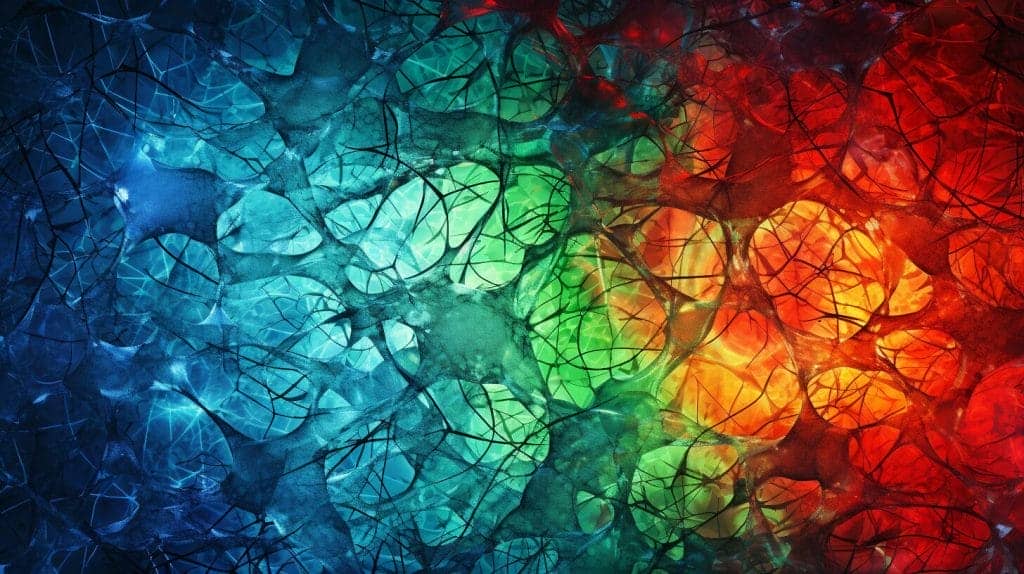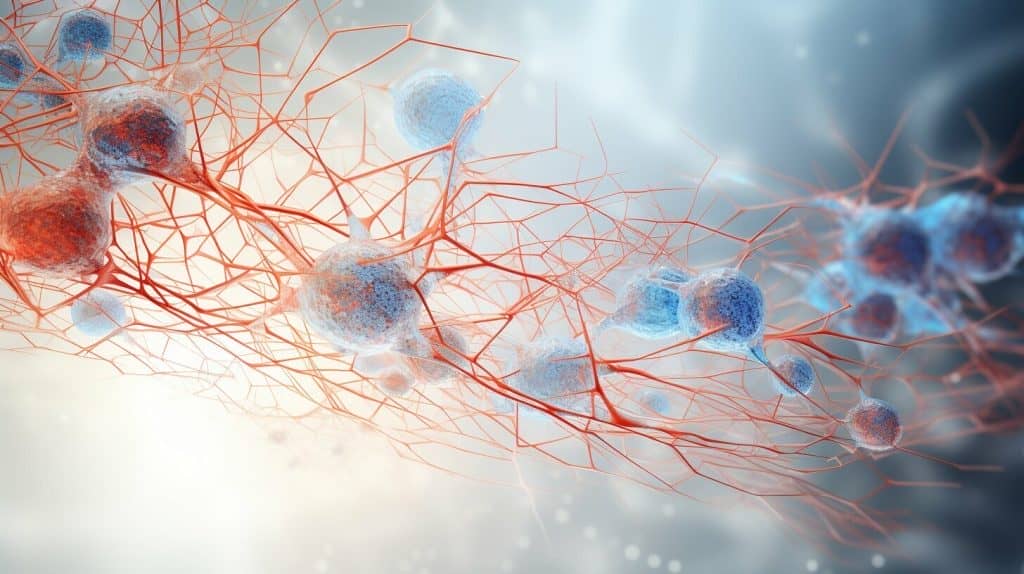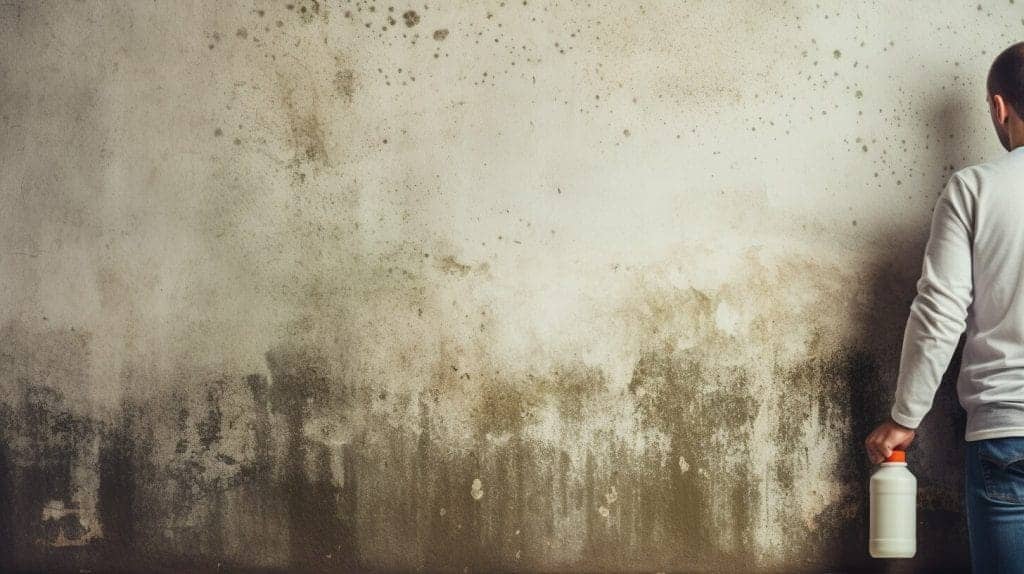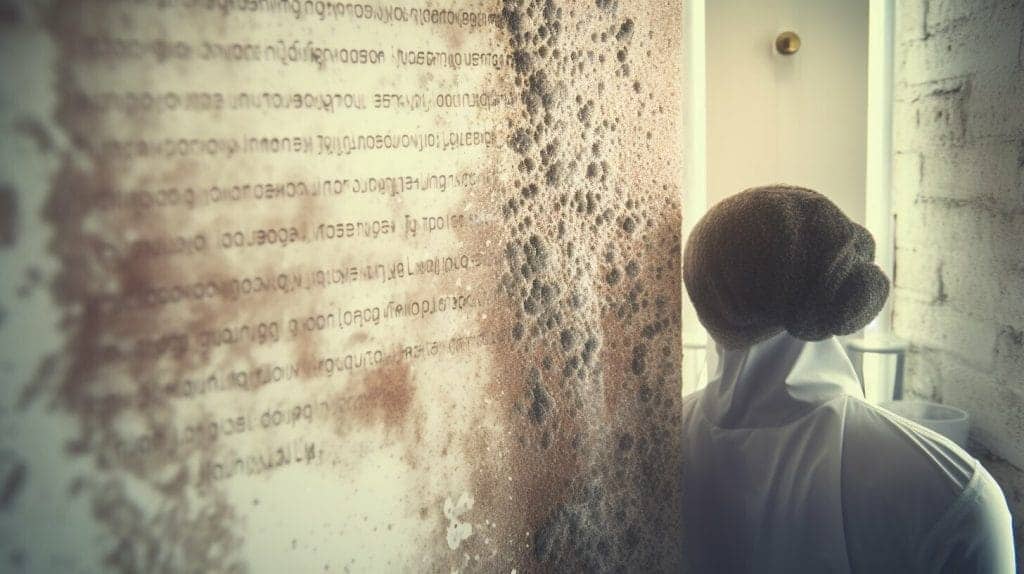Welcome to our comprehensive guide on black mold on walls. If you’re a homeowner or renter, identifying black mold growth in your home is essential for maintaining a healthy living environment.
So, what does black mold look like on walls? The signs of black mold growth on walls are often subtle and can be difficult to identify without proper knowledge. From musty odors to respiratory symptoms, there are various signs that suggest the presence of black mold on walls.
In this article, we will discuss everything you need to know about black mold on walls, including its characteristics and health risks, how it grows, the signs to look out for, and most importantly, how to get rid of it and prevent it from coming back. Keep reading to be equipped with all the necessary information to tackle this common household issue.
What Is Black Mold?
Black mold, also known as Stachybotrys chartarum or Stachybotrys atra, is a type of mold that is often found in damp or water-damaged areas of the home. It is a type of fungus that can release spores into the air, potentially causing health problems for those who are exposed.
Black mold is characterized by its dark, black or greenish appearance. It can have a slimy or fuzzy texture, and may grow in a number of different patterns. While it is often associated with water damage, it can also grow on materials like wallpaper, carpet, and upholstery if there is sufficient moisture present.
Health Risks Associated with Black Mold
There are a number of health risks associated with exposure to black mold. These include:
- Respiratory issues, including coughing, wheezing, and difficulty breathing
- Allergic reactions, including sneezing, runny nose, and itchy eyes
- Headaches, dizziness, and fatigue
- Weakness and muscle cramps
- Suppressed immune system function
Individuals who are particularly vulnerable to these health risks, such as young children, the elderly, and those with compromised immune systems, may be especially susceptible to the effects of black mold exposure.
How Does Black Mold Grow on Walls?
Black mold is a type of fungus that thrives in moist and damp environments. In order for black mold to grow on walls, certain conditions must be present:
| Condition | Description |
|---|---|
| Moisture | Black mold requires a source of moisture in order to grow. This can come from a variety of sources, including water leaks, flooding, high humidity levels, and condensation. |
| Nutrients | Black mold requires organic matter to feed on, such as cellulose from drywall, wallpaper, or other building materials. |
| Warmth | Black mold thrives in warm environments, with temperatures between 60 and 80 degrees Fahrenheit being ideal. |
| Time | Given the right conditions, black mold can begin to grow within 24-48 hours and can quickly spread across walls and other surfaces. |
When any of these conditions are present, it is important to take action to prevent black mold growth on walls and ensure a safe and healthy indoor environment.
What Are the Signs of Black Mold on Walls?
Black mold on walls can be dangerous to your health, and it’s important to be able to recognize the signs of its presence. Here are some indicators:
- Visual Indicators: Black mold can typically be identified by its dark, slimy appearance on walls. It can also appear in green or grey hues.
- Musty Odor: Black mold often produces a strong and unpleasant musty odor that can indicate its presence, even when it is not visible.
- Respiratory Symptoms: Exposure to black mold can cause respiratory symptoms like coughing, wheezing, and shortness of breath.
- Allergic Reactions: Some people may experience allergic reactions such as sneezing, runny nose, and skin rashes when exposed to black mold.
If you notice any of these signs, it’s important to take action to remove the black mold from your walls. Ignoring a potential mold problem can lead to serious health consequences, especially for those with weakened immune systems or pre-existing respiratory conditions.
What Does Black Mold Look Like on Walls?
Black mold on walls can be difficult to identify without the proper knowledge. However, there are a few key characteristics to look out for. Typically, black mold will appear as a dark-green or black discoloration on the surface of the wall. It can have a slimy or fuzzy texture, and may appear in patches or spots.
If left untreated, the mold may continue to spread and can even penetrate into the wall itself. This can cause structural damage and pose health risks to those living in the affected area.
Distinctive Characteristics of Black Mold
There are a few distinctive characteristics that can help identify black mold on walls. These include:
| Characteristic | Description |
|---|---|
| Color | Black or dark-green |
| Texture | Often slimy or fuzzy |
| Appearance | Can appear in patches or spots |
| Growth Pattern | May penetrate into the wall and spread rapidly |
If you suspect that black mold may be present on your walls, it’s important to take action immediately. This can help prevent further growth and minimize health risks for those living in the affected area.
How to Test for Black Mold?
If you suspect that you have black mold on your walls, it’s important to confirm the presence of the mold through testing. There are two main methods for testing for black mold: DIY mold testing kits and professional mold testing.
DIY Mold Testing Kits
DIY mold testing kits are readily available at most hardware stores and online retailers. These kits typically include a petri dish or cassette that is placed in the area where mold growth is suspected. After a period of time, the petri dish or cassette is sent to a lab for analysis. While DIY mold testing kits can be effective, their accuracy can be questionable and may produce false negatives or false positives. Additionally, it can be difficult to interpret the test results accurately without professional assistance.
Professional Mold Testing
Professional mold testing involves a certified mold inspector taking air and surface samples for analysis in a lab. This is typically a more accurate method for testing for black mold and can provide a clearer picture of the extent and type of mold growth present. However, professional mold testing can be more expensive than DIY testing kits.
Regardless of which method you choose, it’s important to take action if black mold is present on your walls. Mold growth can lead to serious health risks and structural damage if left untreated.
How to Get Rid of Black Mold on Walls?
If you have identified black mold on your walls, it’s important to take action promptly to remove it and limit its spread. Here are some tips on how to get rid of black mold on walls:
| Method | Pros | Cons |
|---|---|---|
| Detergent and water | Simple and affordable | May not be effective for severe cases of black mold |
| Bleach solution | Effective at killing black mold | May damage surfaces and release harmful fumes |
| Vinegar and baking soda | Non-toxic and affordable | May not be effective for severe cases of black mold |
| Professional mold remediation services | Effective and thorough removal of black mold | Can be expensive and disruptive to your home or business |
It’s important to note that if the affected area is larger than 10 square feet, it’s recommended to seek professional mold remediation services to ensure safe and complete removal of the mold.
Steps for Cleaning Mold Off Walls
- Wear protective equipment such as gloves, goggles, and a mask
- Seal off the affected area to prevent the spread of spores
- Clean the affected area thoroughly using one of the methods listed above
- Dry the area completely to prevent moisture from causing the mold to regrow
- Dispose of any cleaning materials and protective gear safely
If you are using bleach to clean the affected area, it’s important to dilute it properly and avoid mixing it with other cleaning solutions, as this can create dangerous chemical reactions. Additionally, make sure to provide adequate ventilation while cleaning to prevent inhaling harmful fumes.
Remember that prevention is the best approach to avoid black mold in the first place. Keep your home or business well-ventilated, control moisture levels, and regularly inspect and clean areas prone to mold growth.
How to Prevent Black Mold Growth on Walls?
Preventing black mold growth on walls is essential for maintaining a healthy indoor environment. Here are some steps you can take:
- Control Moisture: Proper moisture control is key to preventing mold growth. Fix any leaks or water damage promptly, and use a dehumidifier or air conditioner to reduce humidity levels.
- Improve Ventilation: Make sure your home has good ventilation to allow for air circulation and prevent moisture buildup. Open windows and use exhaust fans in bathrooms and kitchens to help reduce humidity levels.
- Regular Cleaning and Upkeep: Regular cleaning and maintenance can help prevent mold growth. Keep walls and surfaces dry and clean, and vacuum and dust regularly to remove any potential sources of mold spores.
Additionally, there are some other things you can do to help prevent black mold growth on walls:
- Use Mold-Resistant Materials: Consider using mold-resistant drywall, paint, or insulation in areas that may be prone to moisture buildup.
- Monitor Indoor Humidity Levels: Use a hygrometer to monitor indoor humidity levels and take appropriate action if levels are consistently high.
- Inspect Regularly: Regularly inspect areas that are prone to moisture or water damage, such as bathrooms and basements, and take prompt action to fix any issues.
By taking these steps, you can help reduce the risk of black mold growth on your walls and maintain a healthy indoor environment.
Can You Paint Over Black Mold on Walls?
If you’ve discovered black mold on your walls, you may be wondering if it’s possible to simply paint over it rather than going through the process of removing it. While it may seem like a quick fix, painting over mold is not recommended as it can potentially cause more harm than good.
Mold can grow beneath the paint and continue to spread, and painting over mold can also make it more difficult to detect and address the issue in the future. Additionally, painted-over mold can release spores into the air, which can worsen respiratory symptoms and allergies, and can even lead to serious health complications.
If you must paint over mold, it’s important to take the proper precautions. Use a mold-resistant primer and paint, and wear protective gear such as gloves and a mask to avoid inhaling spores. However, keep in mind that this should only be a temporary solution and that the mold will eventually need to be properly removed.
FAQ: Common Questions About Black Mold on Walls
As a homeowner, it’s important to understand the basics of black mold growth on walls, including its signs, causes, and how to effectively get rid of it. Here are some common questions about black mold on walls:
What should I do if I find black mold on my walls?
If you find black mold on your walls, it’s important to act quickly to prevent it from spreading. Wear protective gear, such as gloves and a mask, and clean the affected area with a mixture of bleach and water or a specialized mold cleaner. If the mold covers a large area or is in hard-to-reach places, consider hiring a professional mold remediation service.
What are the health risks associated with black mold on walls?
Exposure to black mold can cause a range of health problems, including respiratory issues, allergies, and skin irritation. Individuals with weakened immune systems or existing respiratory conditions are at higher risk for developing serious health complications from exposure to black mold.
Can black mold on walls impact indoor air quality?
Yes, black mold on walls can release spores into the air, which can negatively impact indoor air quality. Individuals who spend significant time in the affected room may experience symptoms such as coughing, sneezing, and eye irritation.
What can I do to prevent black mold growth on my walls?
To prevent black mold growth on walls, it’s important to control moisture levels in your home. Make sure to fix any leaks promptly, maintain proper ventilation, and keep humidity levels below 60%. Regular cleaning and upkeep can also help prevent mold growth.
Can I paint over black mold on walls?
While it may be tempting to simply paint over black mold on walls, this is not a recommended approach. Painting over mold can actually seal in the spores and make the problem worse. It’s important to properly clean and treat the affected area before painting.
How much does it cost to hire a professional mold remediation service?
The cost of hiring a professional mold remediation service can vary depending on the size of the affected area and the severity of the mold growth. It’s best to get a quote from a few different companies to determine the most cost-effective option.
By understanding the signs, causes, and treatments for black mold on walls, homeowners can keep their living spaces safe and healthy.
Dr. Francisco Contreras, MD is a renowned integrative medical physician with over 20 years of dedicated experience in the field of integrative medicine. As the Medical Director of the Oasis of Hope Hospital in Tijuana, Mexico, he has pioneered innovative treatments and integrative approaches that have been recognized globally for the treatment of cancer, Lyme Disease, Mold Toxicity, and chronic disease using alternative treatment modalities. Dr. Contreras holds a medical degree from the Autonomous University of Mexico in Toluca, and speciality in surgical oncology from the University of Vienna in Austria.
Under his visionary leadership, the Oasis of Hope Hospital has emerged as a leading institution, renowned for its innovative treatments and patient-centric approach for treating cancer, Lyme Disease, Mold Toxicity, Long-Haul COVID, and chronic disease. The hospital, under Dr. Contreras's guidance, has successfully treated thousands of patients, many of whom traveled from different parts of the world, seeking the unique and compassionate care the institution offers.
Dr. Contreras has contributed to numerous research papers, articles, and medical journals, solidifying his expertise in the realm of integrative medicine. His commitment to patient care and evidence-based treatments has earned him a reputation for trustworthiness and excellence. Dr. Contreras is frequently invited to speak at international conferences and has been featured on CNN, WMAR2 News, KGUN9 News, Tyent USA, and various others for his groundbreaking work. His dedication to the medical community and his patients is unwavering, making him a leading authority in the field.
Contreras has authored and co-authored several books concerning integrative therapy, cancer, Lyme Disease and heart disease prevention and chronic illness, including "The Art Science of Undermining Cancer", "The Art & Science of Undermining Cancer: Strategies to Slow, Control, Reverse", "Look Younger, Live Longer: 10 Steps to Reverse Aging and Live a Vibrant Life", "The Coming Cancer Cure Your Guide to effective alternative, conventional and integrative therapies", "Hope Medicine & Healing", "Health in the 21st Century: Will Doctors Survive?", "Healthy Heart: An alternative guide to a healthy heart", “The Hope of Living Cancer Free”, “Hope Of Living Long And Well: 10 Steps to look younger, feel better, live longer” “Fighting Cancer 20 Different Ways”, "50 Critical Cancer Answers: Your Personal Battle Plan for Beating Cancer", "To Beat . . . Or Not to Beat?", and “Dismantling Cancer.”









